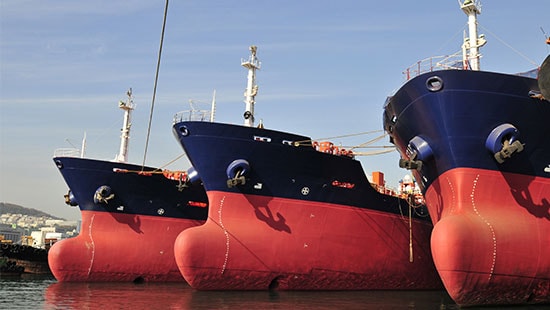Hydrogen sulfide occurs naturally in petroleum products and is also formed during the refining process through the degradation of sulfur compounds at high temperatures. Products with higher distillation ranges tend to contain more of the sulfur compounds that can thermally degrade into H2S. Therefore, products such as heavy oils, residual fuels, bunker fuels and marine diesel tend to contain significant amounts of H2S. Refiners, transport companies and specification-setting agencies have placed limits on H2S in order to reduce the risk of handling these types of products.
H2S in Bunker Fuels and Fuel Oils
Bunker fuels and fuel oils can contain elevated levels of H2S in the vapor and liquid phases. Partitioning between the liquid and vapor depends on temperature, agitation, viscosity and the specific composition of that particular fuel. In order to improve safety conditions for personnel handling bunker fuels, the most recent ISO specification limited H2S to less than 2 ppm in the liquid phase as determined by IP570.
H2S in Heavy Oils
Heavy oils tend to have high concentrations of H2S, a particular concern during extended storage or transport between refineries. Heavy fuels with high concentrations of H2S can cause corrosion in storage tanks, odor issues and safety concerns for both personnel and the public. H2S specifications for heavy oils are set by refineries, terminals, and barging companies in order to improve safety and protect equipment integrity.
H2S Scavengers
Heavy oils, bunker fuels and fuel oils are all commonly treated with triazine- based H2S scavengers. These products provide an efficient and reliable means of reducing H2S. The reaction between H2S and triazine scavengers is rapid and irreversible. Refinery feedstocks may be treated with an alternative H2S scavenger if they will be reprocessed through a crude unit. Alternative H2S scavengers include:
- Heavy-amine H2S scavengers are formulated to contain an amine that will not distill into the overhead of the crude tower, mitigating the risk for formation of amine-chloride salts.
- Very low/non-nitrogen H2S scavengers are non-amine formulations which contain no nitrogen or very low levels of nitrogen (<1500>These products are typically recommended for nitrogen sensitive intermediates or for applications where the presence of amines is problematic.
The Nalco Water Difference
Nalco Water offers a wide range of H2S scavengers, including triazine-based H2S scavengers, and the alternative scavengers previously discussed. Our complete product line offers us the flexibility to design an H2S abatement program that will safely and effectively reduce H2S without causing issues in downstream equipment.



